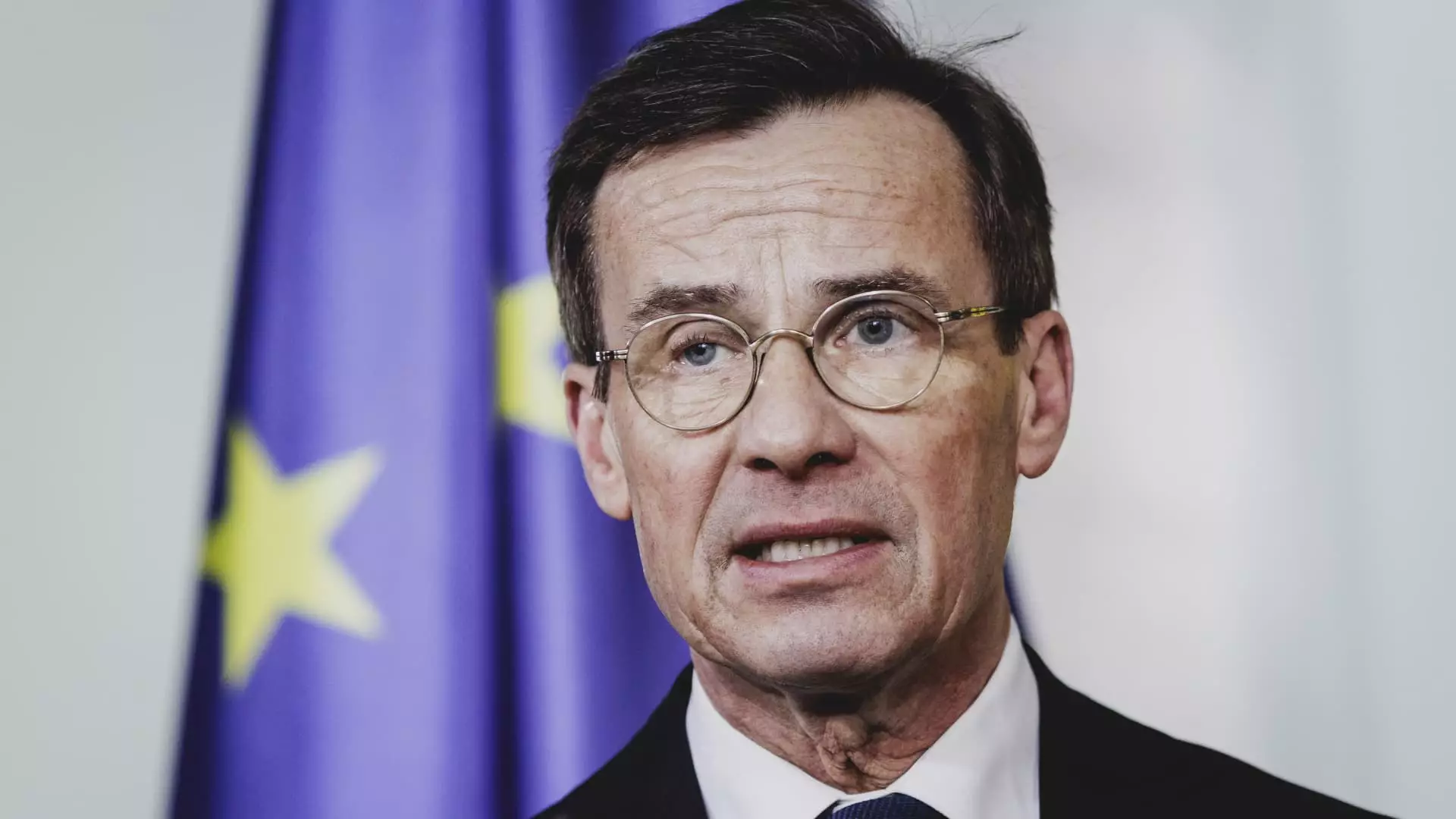In recent discussions among European leaders, a stark and urgent warning has emerged regarding the continent’s future in the rapidly evolving realm of artificial intelligence (AI). Sweden’s Prime Minister Ulf Kristersson underscored a troubling narrative: Europe risks becoming a “museum” if it fails to loosen its regulatory grip on AI technologies. This metaphor is powerful, evoking images of stagnation where once vibrant avenues of innovation now lay dormant, overshadowed by the rapid advancements and investments occurring in the United States and China.
Highlighting the disparity in economic growth between Europe and its global counterparts over the last two decades, Kristersson’s comments resonate with an escalating sense of urgency. Europe’s rigorously structured regulation could potentially inhibit the continent’s capabilities to thrive competitively. With countries like the U.S. and China driving forward with ambitious investments and initiatives, the need for Europe to strike a balance between regulation and innovation has never been more pressing.
Just last week at the Paris AI Action Summit, several European leaders echoed these sentiments, emphasizing the necessity for Europe to amplify its competitive stance in the global AI arena. French President Emmanuel Macron unveiled a monumental 109-billion-euro strategy aimed at catapulting the nation’s AI sector forward, drawing on significant contributions from both domestic and international investors. Meanwhile, Ursula von der Leyen, the President of the European Commission, announced plans for the EU to mobilize an impressive 200 billion euros for AI investment throughout the region.
However, these financial strategies come in the backdrop of a complicated regulatory landscape. Regulatory frameworks like the EU’s AI Act—introduced as a comprehensive mechanism to filter out potential risks associated with AI technologies—have drawn criticism from various industry leaders who view such measures as overly restrictive. The act is intended to enhance safety and accountability in AI adoption but has inadvertently raised barriers that threaten the viability of European innovation in this critical sector.
Conversely, U.S. executives and policymakers have taken to criticizing Europe’s regulatory fervor. With Vice President JD Vance advocating for a more conducive environment for AI development, he asserts that European nations need to approach AI with a more optimistic perspective. His remarks during the Paris summit articulated a need for international regulatory frameworks that do not stifle creativity or technological progress. Instead of fostering apprehension toward AI’s potential, he urged European allies to embrace it wholeheartedly in a bid to avert a competitive disadvantage.
America’s apparent status as the leader in AI innovation can alternatively be perceived as a call to action for Europe. The U.S.’s commitment to fostering AI through less stringent regulations stands in stark contrast to the European model, which has prioritized risk aversion potentially at the expense of growth. This divergence in approach raises pertinent questions regarding the sustainability of Europe’s position in the tech landscape.
Kristersson’s assertions resonate not just within Sweden but across Europe, suggesting that if this situation persists, the local tech ecosystem will face significant challenges. The current narrative hints at a troubling trend where European startups grapple with access to capital, leading many to consider relocation to more favorable environments like the U.S. The dual stresses of stringent laws and capital shortages threaten to usher in a brain drain, where the continent loses some of its brightest entrepreneurial minds eager to innovate.
To safeguard against this potential decline, Kristersson advocates for a future in which Europe becomes a thriving hub for business and innovation. This entails a concerted effort to reduce regulatory burdens, thereby allowing access to capital and talent necessary for nurturing new technological breakthroughs. Essentially, the call is for a paradigm shift from an overregulated landscape to one where innovation is empowered.
Ultimately, the way forward hinges on a unified vision among EU member states. It is imperative for European leaders to engage in open dialogues aimed at balancing regulation with the necessity for growth. The onus lies with policymakers not just to mitigate risks but also to create an environment conducive to fostering creativity in technology.
In preserving the essence of Europe as a competitive player in the AI field, a collective effort is paramount. With a move towards deregulation, investments in technology, and fostering a risk-taking culture, Europe can enhance its position on the global stage. The choice is clear: either adapt swiftly and effectively or risk fading into irrelevance in the technosphere.


Leave a Reply